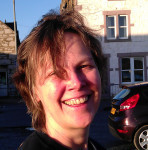P.C. Zick's Blog, page 37
February 23, 2014
Rules for Writing Fiction
Excellent tips for all my writer friends.
 Originally posted on Rantings of a Closet Vamp Princess:
Originally posted on Rantings of a Closet Vamp Princess:
Thanks to
Advice to Writers
for sharing this quote!
Margaret Atwood’s Ten Rules for Writing Fiction
1. Take a pencil to write with on aeroplanes. Pens leak. But if the pencil breaks, you can’t sharpen it on the plane, because you c an’t take knives with you. Therefore: take two pencils.
an’t take knives with you. Therefore: take two pencils.


February 19, 2014
Author Wednesday – Rita Lee Chapman
Welcome to Author Wednesday. Today I welcome Rita Chapman, or as she’s known in the writing world, Rita Lee Chapman. She added the “Lee” to her professional name so her books aren’t confused with another Rita Chapman who writes vampire stories. Rita’s first book, Missing in Egypt, is set in Australia and Egypt is a romantic travel mystery.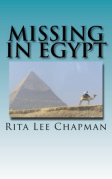
 Her latest offering, Winston-A Horse’s Tale, is told through the eyes of Winston, the horse.
Her latest offering, Winston-A Horse’s Tale, is told through the eyes of Winston, the horse.
Welcome to Author Wednesday, Rita. I’m always interested in how fellow writers view their subject matter. I was intrigued when I heard Rachel Carson, author of Silent Spring, said she never chose a subject because as a writer, the subject chose her. Has this ever happened to you?
My second book, Winston – A Horse’s Tale, was the story I had to write. I have had a lifelong love of horses and wanted to write from the horse’s perspective, to try to help people understand what it is like when different owners have a different way of going about things, use different riding skills, or expect different things from the horse.
What message were you trying to convey through Winston?
I wanted riders to see things from the horse’s point of view, to try and look at why he does certain things which often stem from something that happened in his past.
What are you working on now?
My next book is a crime thriller, but I am only about four chapters in to it. I have had to put it aside for the moment to promote Winston – A Horse’s Tale.
Promoting is one of those necessary evils as are reviews. What’s the best thing said about one of your books by a reviewer?
This one, written about Missing in Egypt, I think says it all for me. “Good plot, good characters and well written. I look forward to her next book.”
That’s about the best that can be said about any of our novels. Bad reviews are also a part of the job, so what advice can you give to other writers about receiving a bad review?
Think about what has been said. Do the comments have any relevance? If they do, take them on board. If it is someone who is obviously jealous or nasty, quickly dismiss it.
Excellent advice. What’s your one sentence pitch for Winston?
One for horse lovers, from teenagers upwards.
How did you choose the title?
Actually, Winston started off as a grey called Monty. When I came to do the cover the photo of a grey horse I had in mind didn’t come up as well as I had hoped so I looked at the other photos I had, and he became a palomino called Winston!
What is the best thing someone could say about this book?
They enjoyed it!
If you could invite two other authors over to your house for dinner, who would you choose and why.
Kate Morton and the late Bryce Courtenay, both wonderful Australian authors.
Is there one book or author with whom you identify or hold up as your standard-bearer?
I have only just discovered Brisbane-based author, Kate Morton. I read her first book Shifting Fog and just love her style of writing and the wonderful characters she created.
What do you do when you’re not promoting or writing?
I enjoy music, reading, playing tennis, walking and swimming. I live in a wonderful part of Queensland where I have the choice of walking by a river, a lake, or along the beach.
Thank you so much for stopping by today, Rita. I plan on giving Winston as a gift to several of my horsey friends.
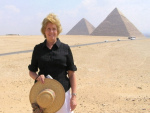 Rita Lee Chapman lives in Australia. Her books are available through Amazon and Smashwords.
Rita Lee Chapman lives in Australia. Her books are available through Amazon and Smashwords.
Links to books and social media sites
Missing in Egypt:
Amazon: http://viewbook.at/Amazon_Missing-in-Egypt
Smashwords: http://www.smashwords.com/books/view/263417
There is also a Large Print Edition at:
Amazon: http://viewBook.at/Amazon_Missing-in-Egypt-large-print
Winston – A Horse’s Tale:
Amazon: http://mybook.to/Amazon_Winston
Smashwords: https://www.smashwords.com/books/view/372140
Rita Lee Chapman website: http://www.ritaleechapman.com


February 17, 2014
Taming Romeo – A New Release from Rachelle Ayala
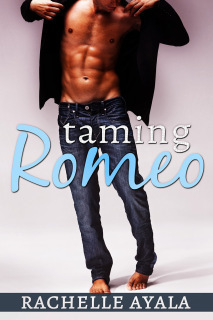
Evie Sanchez is recovering from heartbreak by working at her parents’ Filipino restaurant when in walks Romeo Garcia, the boy she left behind. Only now, he’s a hot movie star surrounded by gorgeous actresses and adoring fans.
Bad boy Romeo Garcia never understood why Evie stood him up at the prom. When he rescues her from a flying coconut in the dumpster, he is determined to dig into her heart for the reason. Their mutual attraction and unresolved feelings ignite in a scintillating night of daring sex, and Romeo shows Evie what she’ll miss the rest of her life if she walks away again.
Evie lands a part as Romeo’s co-star and falls into her role, totally in love. He plays his part, too, with his romantic gestures and skillful lovemaking. But is the fantasy real or revenge? Evie and Romeo are about to discover if their buried feelings will explode in pure delight or utter disaster.
“Second chance love is always the sweetest.” – Jessica Cassidy
“Sexy and funny, a unique take on love reignited.” – Racquel Reck
Author’s Note: I had a lot of fun writing Evie and Romeo’s story. I let my fantasies go wild and I hope you’ll enjoy the motorcycle, hot tub, and restaurant scenes.
Taming Romeo is available for 99c [introductory price] on Amazon US India UK DE FR ES IT Canada Brazil Japan Mexico Australia
Barnes & Noble Nook, Kobo Books, Smashwords
Cover Design: Rebecca Berto, Berto Designs
Contact Rachelle at: Website
Visit her blog: http://www.rachelleayala.com


February 14, 2014
Book Review Friday – Sewing Can be Dangerous
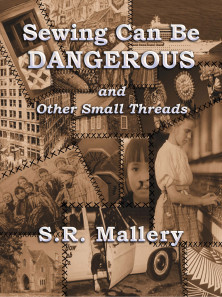 I loved S. R. Mallery‘s first book, Unexpected Gifts, for its rich and varied historical eras used in the setting and theme of the novel.
I loved S. R. Mallery‘s first book, Unexpected Gifts, for its rich and varied historical eras used in the setting and theme of the novel.
She continues that same talent in her collection of short stories, Sewing Can Be Dangerous and Other Small Threads. The thread that holds the stories together is a literal one as all the short stories employ some type of sewing or weaving of threads at the heart of the plots. The stories are set in important historical eras and are sometimes romantic, sometimes horrific, and always riveting. The life of immigrants who worked in the textile plants during the heyday of the Industrial Revolution are profiled in one of the short stories. It’s not only an indictment of the appalling conditions of the workrooms but Ms. Mallery also examines the yearnings of a young woman who wants to disappear from her cruel and repressive father. Nazi Germany and all its ramifications on those who tried to help the Jews escape from the torture and death at the hands of the Nazis is the setting for one story. A quilt becomes the all important piece of evidence and hope for fifty Jews hoping to leave the country before they were rounded up by Hitler’s soldiers. Medieval courts, Hopi and Chinook native traditions, the sixties from a unique perspective, and more make up the varied and entertaining plots.
In the talented hands of Ms. Mallery, this collection of short stories allows the reader to escape into other worlds where even a macrame necklace can become an object of subterfuge and a piece of evidence in a murder case.
I thoroughly enjoyed reading each story. I began each one with great anticipation as I discovered the era, setting, and threads to tie it altogether. Sometimes the sewing and thread of the story wasn’t evident, and in other stories, it played a starring role.
The divergent historical content is impressive. Ms. Mallery’s research is evident only after completing the story because while engrossed in the plot of each one, I forgot I was reading and simply enjoyed each of the journeys Ms. Mallery created for me.
I highly recommend reading this collection of short stories weaved by a very meticulous and talented author.
S.R. Mallery’s Amazon Author page – find out more about her and find purchase links for both of her books.


February 12, 2014
Book Blitz with Juniper Grove Book Solutions
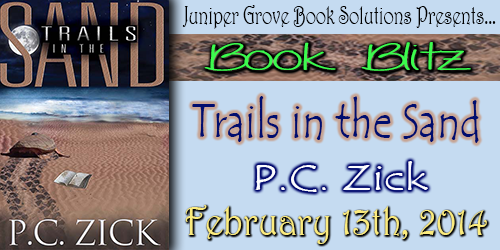 It came as a delightful surprise when Jaidis over at Juniper Grove Book Solutions wrote me an email to inform me I’d won a one-day book blitz. I readily accepted my prize, and now the big day has arrived. There’s a drawing for my Florida fiction and environmentally focused novel, Trails in the Sand. U.S. winners will receive a paperback edition and international winners an eBook. Eighteen bloggers signed up to host me. Check out their blogs and enter to win.
It came as a delightful surprise when Jaidis over at Juniper Grove Book Solutions wrote me an email to inform me I’d won a one-day book blitz. I readily accepted my prize, and now the big day has arrived. There’s a drawing for my Florida fiction and environmentally focused novel, Trails in the Sand. U.S. winners will receive a paperback edition and international winners an eBook. Eighteen bloggers signed up to host me. Check out their blogs and enter to win.
Sue @ Books, Books, the Magical Fruit
Erika @ Cloud Nine Girl
Denise @ Rantings of a Closet Vamp Princess
Jannat @ Living an Eternal Fairytale
J. Hooligan @ Platypire Reviews
CCAM @ Mythical Books
Mary @ Mary’s Cup of Tea
Patricia @ Room With Books
Vicky @ Deal Sharing Aunt
Ruth @ My Devotional Thoughts
Laurie @ Laurie’s Thoughts and Reviews
Jaidis @ Juniper Grove
Sabrina @ Sabrina’s Paranormal Palace
Sheila @ Sheila Deeth
John @ Illuminite Caliginosus
Heather @ The Rambling Jour
Cu’Anam @ Cu’s eBook Giveaways
Sarka-Jonae @ Between Boyfriends


Author Wednesday – R.J. Crayton
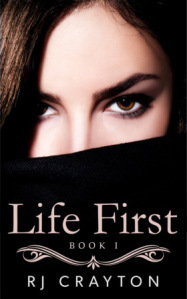 Welcome to Author Wednesday. Today I welcome R.J. Crayton, who writes science fiction thrillers. She left a
Welcome to Author Wednesday. Today I welcome R.J. Crayton, who writes science fiction thrillers. She left a 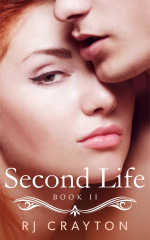 career as a journalist to care for her young children, but writing wouldn’t leave her alone. She’s published the first two books in her series, Life First and Second Life, and the third will be released later this year.
career as a journalist to care for her young children, but writing wouldn’t leave her alone. She’s published the first two books in her series, Life First and Second Life, and the third will be released later this year.
Hello, R.J. You’ve worked as a journalist for some very large publications, but do you remember when you first called yourself a “writer” or “author?”
I’ve always loved to write, and I first called myself a writer when that’s what I did for a living. I’ve written for the Kansas City Star, Wichita Eagle, and several smaller publications. I’ve called myself an author since publishing my book in June 2013, so not really that long.
Since you were once a reporter, how about giving us a sample of how you’d write a brief article about yourself as an author on the rise.
Ha ha, I feel like a ringer answering this question. But, here goes:
WASHINGTON – With the new ease of self-publishing, it seems these days that everyone’s published a book. Many of these books are simply work the authors “put out there” to see what happened. What happened was nothing. A newcomer to the pile last year was author R.J. Crayton, an Illinois native who came east with her husband and never left. She’s written two novels, part of a dystopian thriller series, and something has happened: readers are clamoring for more.
Excellent. I find it very difficult to write about myself, but you did a fine job. You have the third book in your series almost ready for publication. Tell us a little bit about the book.
Right now, I’m completing the third book in the Life First series. It still needs a title (yikes!). The first draft is done, but it needs editing and beta readers. I’m also working on a paranormal YA novel, which is a lot of fun. It’s loosely titled Scented.
Since you’re relatively new to the Indie Author thing, what knowledge have you acquired that might assist other writers?
I’ve learned many things. One is to ask for help if you don’t know something because the writing community is extremely generous with its time and assistance. The second thing is to get not just professional covers, but covers that are eye catching and help pull in your readers. I recently underwent a cover change. The previous cover was well done and professional, but I think a little too abstract for the subject matter.
That’s an interesting point. I’ve considered changing the cover on my latest release which is very nicely done by a professional, too. But I don’t think it pulls folks in. I’ll be interested in how the change worked for you. Since you’ve been writing a series, do all your books have a common theme or thread?
At present, the only books I’ve written are all part of the same series, so they clearly have a common thread. They all involve this same Life First society and how it reacts when people, Kelsey and Susan in particular, go against the grain.
What kinds of techniques do you like to use in your writing?
The main thing I do is try to make my writing page turning. I want my readers to want to keep going, to feel like they don’t want to put the book down. If they shove their kids in front of a continuous loop of Dora the Explorer or the Fresh Beat Band so they can read my book, I’ll absolve them of their guilt, because that was always my nefarious plan.
That’s a great plan.What’s the best thing said about one of your books by a reviewer?
Life First got a great review from Griffin’s Honey Blog: “This novel was a poignant, riveting, thought-provoking read that had me entranced from page one until the very end of the book. In simple speak, I literally could not put it down.”
I’m sure that felt rewarding since that should be the goal for all writers. Tell us the one sentence pitch for the new book.
Strong-willed Kelsey Reed must escape tonight or tomorrow her government will take her kidney and give it to someone else.
Geez, I hope she escapes. That certainly captures the reader’s attention. How was the book was conceived in your imagination?
I got the idea after seeing an article about a woman who refused to have cesarean section because she didn’t want to be “sliced open like a pig” and the baby died. There was much conjecture over whether doctors should have simply done surgery without the woman’s permission to save the baby. After reading the article, I wondered what a society would look like if it pitted one person’s survival against another. A society where they’d slice you open and take what they needed to save someone else.
Without giving us a spoiler, tell us a little bit about your favorite scene in this book.
My favorite non-spoiler scene is one where Kelsey and Luke discuss what will happen if she doesn’t escape: a holding facility. In holding facilities, the future’s answers to prisons, inmate are held until their organs are needed by law abiding citizens. At that point, the organs are harvested and the inmates die. Kelsey has this great line about holding facilities being the “used parts drawer the government reaches into to cure it’s neediest patients.” That’s a great, early scene in the book, one of my favorites.
What else do you want readers to know about your book?
It’s an Awesome Indies Approved book.
Thanks for stopping by today, R.J. I wish you the best on your books and the completions of the unnamed book 3.
 About R.J. Crayton: She grew up in Illinois and now lives in a Maryland suburb of Washington, DC. She is a fiction writer by day and a ninja mom by night (What is a ninja mom, you ask? It’s the same as a regular mom, only by adding the word ninja, it explicitly reveals the stealth and awesomeness required for the job of mom). Before having children, Crayton was a journalist. She’s worked at big publications like the Wichita Eagle and the Kansas City Star, and little publications like Solid Waste Report and Education Technology News. Her first novels, Life First and Second Life, were published in 2013. The third novel in the series will be released in 2014.
About R.J. Crayton: She grew up in Illinois and now lives in a Maryland suburb of Washington, DC. She is a fiction writer by day and a ninja mom by night (What is a ninja mom, you ask? It’s the same as a regular mom, only by adding the word ninja, it explicitly reveals the stealth and awesomeness required for the job of mom). Before having children, Crayton was a journalist. She’s worked at big publications like the Wichita Eagle and the Kansas City Star, and little publications like Solid Waste Report and Education Technology News. Her first novels, Life First and Second Life, were published in 2013. The third novel in the series will be released in 2014.
Links
Website: R.J. Crayton
Facebook: R.J. Crayton, Author
Twitter: @RJCrayton
February 5, 2014
Author Wednesday – Andrew Lennon
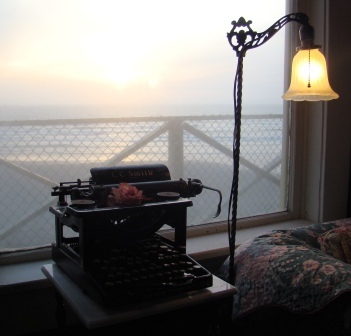 Welcome to Author Wednesday. Today I welcome Andrew Lennon whose novel,
A Life To Waste, follows the life of a middle-aged man named Dave. A tragic accident when he was younger caused him to give up on life. Now he spends his days drinking and mooching off his mother. One night his world is turned upside down when his mother is taken away. Dave tried to track down this “thing” and embarks on a horrifying and gruesome adventure.
Welcome to Author Wednesday. Today I welcome Andrew Lennon whose novel,
A Life To Waste, follows the life of a middle-aged man named Dave. A tragic accident when he was younger caused him to give up on life. Now he spends his days drinking and mooching off his mother. One night his world is turned upside down when his mother is taken away. Dave tried to track down this “thing” and embarks on a horrifying and gruesome adventure.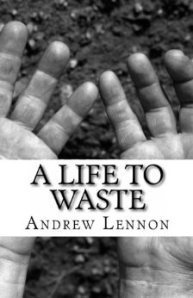
Andrew, I’m so glad you could visit my blog today. Your novel sounds intriguing as well as frightening. I’m always interested in how authors find their voice. Do you remember when you discovered your voice as a writer?
I have always enjoyed writing stories, and I used to write a lot when I was younger. I stopped for a while when I reached my late teens. Not long ago I gave up drinking and found I had so much more free time on my hands. I began to read a lot more, and then thought I would start writing again. I was shocked at how easily the words spilled onto the pages. I didn’t have to stop to think about what I should write next because it all just seemed to come naturally. So now I try to do it as often as possible; it’s fun for me.
Congratulations on finding that voice again and on your new sobriety. Who has most influenced your writing and why?
My biggest influence has to be Stephen King. I think anyone who writes horror would probably agree that he is the best out there and any author should aspire to be that good. Another very big influence is Ryan C Thomas. It was while reading his book The Summer I Died that I decided to give it a go myself. I even sent him messages asking advice, and he was kind enough to respond which gave me a lot of motivation.
That’s wonderful that he replied to your inquiry. I’m sure that gave you a good amount of motivation to begin your book. Good for you and for Ryan C. Thomas. What’s going on in your writing life now?
I have a few things going on right now. I have written a few short stories which at some point I hope will go into anthologies. I also have another book which I’m a couple of chapters into.
Do you have a favorite character that you created?
My favorite character is probably Trevor in A Life To Waste. He only plays a small role, but he reminds me a lot of an old friend so I have a great feeling of nostalgia when reading about him.
What’s the best thing said about your writing by a reviewer?
One review said that I was “the Lowry of the written word.” I know that Lowry is made famous for making the simple, quite beautiful so I took this as a huge compliment!
That is a great compliment. Since another writer gave you the motivation to begin writing, what advice can you give to other writers about receiving a bad review?
The same advice I was given when I received mine. You can’t please everyone because people have different tastes, so it is impossible for everyone to enjoy your work. If you are fortunate enough that the reviewer has highlighted what it is they didn’t enjoy then take those points on board and try to improve on that in your next project.
That’s very good advice, and I agree. It’s important to learn from reviews if they’re constructive. One of the most difficult things for writers is crystallizing the topic of their book into one succinct sentence. What’s your one sentence pitch for A Life To Waste?
Dave has wasted his life away, now he has to fight an unknown horror to try and win it back.
How did you choose the title? Has it been the title from the very beginning?
No, the title was originally Out of Time but it got changed along the way. A Life To Waste seems more fitting for the main character.
Based on the short description of the book, A Life to Waste seems to be a better suited title. How long do you estimate it took you to take the book from an idea to a finished, published product?
In total it was probably about four months. I tried to write for an hour each night without fail so it all came together quite quickly.
That is amazing. Is the book traditionally or self-published?
It’s self published. It is so quick and easy to get your work out to the world right now I don’t see why not.
What is the message conveyed in your book?
Appreciate what you have because one day it could all be taken away from you.
What is the best thing someone could say about this book?
That they couldn’t stop reading it and would recommend it to friends.
Explain how this book was conceived in your imagination.
I heard neighbours fighting one night. They are always fighting and screaming. I thought, one day they’ll be getting killed and everyone will ignore them.
Who is the antagonist in your book? Did you enjoy creating this character?
The antagonist is this book is a bit of a mystery character. You don’t learn an awful lot about him. Just that he is there and should be feared. I did quite enjoy creating him yes.
Without giving us a spoiler, tell us a little bit about your favorite scene in this book.
OK, read the book and you’ll understand, but when the ice cream van turns up. I can’t say more than that, sorry.
That’s a good teaser. What else do you want readers to know about your book?
It’s my first book so it is a relatively easy read. I think it’s a scary read and most people would enjoy it. It also sends quite a psychological message about how easy it is to waste your life away. This story goes a fair bit deeper than just horror.
If you could invite two other authors over to your house for dinner, who would you choose?
Stephen King and Ryan C Thomas, my two biggest influences. It would be awesome!
Is there one book or author with whom you identify or hold up as your standard-bearer?
Again, Stephen King. Probably The Shining being my favorite book of his.
Do you have any particular rituals or good luck charms in your writing process?
Does eating chocolate count? If it does then that is my writing ritual.
Chocolate always counts. If listen to music while you’re writing, what is it?
Usually quite heavy, I usually just put Kerrang on in the background.
Where do you write?
In bed mainly.
That’s where I like to write sometimes, too. How does your immediate family feel about your writing life?
They all are very supportive and enjoy my writing.
What do you do during your down time?
I read a lot and I spend a lot of time with my family.
What book are you reading right now?
Poe’s Children – A Horror Anthology put together by Peter Straub.
Do you set your books in the place you live?
No, I live in England. I usually imagine my writings in a suburban Amercian neighbourhood. I don’t know why, just seems to happen.
If a movie was made about your success as a writer, who would play you?
Hmmm, I’d like to be hopeful and say someone like Brad Pitt, but I don’t know, maybe a not-so-funny Adam Sandler?
Andrew, it’s been a pleasure getting to know you today. I’m so glad you stopped by for a visit.
 About Andrew Lennon: Andrew Lennon was born in Maghull, Merseyside, in 1984. He works for his father’s company based in Warrington. Having always enjoyed writing, Andrew is now trying to get his stories out to the public. With influences such as Ryan C Thomas, Stephen King, and Jack Ketchum. A Life To Waste is Andrew’s first novella. Andrew enjoys reading, camping, watching TV, and spending time with his wife Hazel and their children.
About Andrew Lennon: Andrew Lennon was born in Maghull, Merseyside, in 1984. He works for his father’s company based in Warrington. Having always enjoyed writing, Andrew is now trying to get his stories out to the public. With influences such as Ryan C Thomas, Stephen King, and Jack Ketchum. A Life To Waste is Andrew’s first novella. Andrew enjoys reading, camping, watching TV, and spending time with his wife Hazel and their children.
Links:
UK site for A Life to Waste
USA site for A Life to Waste
February 3, 2014
Author Blog Chain – Darlene Jones
Good Monday Morning –

Darlene Jones
Last Monday I participated in an Author Blog Chain. One of the authors I tagged was Darlene Jones, the author of the “Em and Yves series,” a science fiction love story. As you can read below, Darlene has a special category for her books. I reviewed Embattled a few months back–check it out.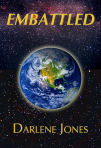 What are you currently working on?
What are you currently working on?
I’m putting together a book of short humor and travel bits that I hope readers will enjoy. I’m adding pictures when I can.
How does your work differ from others’ in the same genre?
Genre is a tough one as my books don’t fit any one genre. They’re sci-fi, but not hard core technical science fiction so I call them “soft” sci-fi. They’re romance too, with a great love story that transcends time and death, but not romance in the sense of the romance genre. They’re adventure too. So how do I categorize them? Good question for which I do not have an answer.
Why do you write what you do?
I lived in Mali for a time. The poverty was horrific. I wanted to wave a magic wand to make life better for the Malians who manage to smile in spite of their difficult lives. So I gave my heroine the ability to “fix” many of the problems in the world. Of course things don’t always work out as planned for the alien controlling her is a rookie, and he messes up.
How does your writing process work?
It’s evolving from and sort of hit and miss approach that involved revolving paragraphs to working with a rough outline which is not overly detailed and is flexible to be changed as I go. I do have periods of “writer’s block” which I don’t worry about. I take that to mean that I need a break and when ideas start circulating during bouts of insomnia, I know it’s time to write again.
Check out Darlene’s website at www.emandyves.com.


January 31, 2014
Book Review Friday – David Lawlor’s “Liam Mannion” series
An author faces a monumental task when writing historical fiction. If one historical fact is wrong or an anachronism appears, the reader is likely to put aside the book in favor of one that achieves historical accuracy tempered with believable dialogue, heightened tension, and sympathetic, yet flawed, heroes.
If you are a reader of historical fiction who requires accuracy, suspense, and flawed, yet heroic main characters, then I suggest you go directly to Amazon and buy Tan or The Golden Grave or both by David Lawlor.
 I read Tan first because it is the first in the “Liam Mannion” series of suspenseful and historical novels written by Lawlor. I interviewed him on Author Wednesday a few months back and was intrigued to learn this journalist writes while commuting to his job an hour each way. This process works to create suspenseful fiction with colorful and unforgettable characters.
I read Tan first because it is the first in the “Liam Mannion” series of suspenseful and historical novels written by Lawlor. I interviewed him on Author Wednesday a few months back and was intrigued to learn this journalist writes while commuting to his job an hour each way. This process works to create suspenseful fiction with colorful and unforgettable characters.
Set in England and then Ireland in the year after the end of World War I, Tan explores the war of a closer nature immediately following Liam Mannion’s release from the English Army in 1919. Here’s a guy forced to leave Ireland at a young age because of an act he witnessed after a night of drinking at a friend’s wedding. It’s here where the conflict of the story begins when the evil Webber blames and accuses the young Liam of an indecent act against a virtuous married woman. Webber’s fiction that forces Liam into exile begins a whole series of events that mark Liam for life.
Liam heads to England in 1914 and ends up in the English army fighting in France during the majority of World War I.
When Liam eventually heads back to England after the horrid and putrid rot of dead bodies that made up his memory of the war, he ends up in an insufferable situation, which leads him to homelessness, and then worse, as an officer of the crown as a member of the powerful and often repressive Black and Tan. Liam turns a blind eye to the atrocious behavior of his English comrades, only until it becomes evident that his loyalty to the Black and Tan extracts too high of a rent for clean clothes and warm bowl of soup.
Lawlor captures the uncertainty of the times through the examination of Liam’s uncertain future as he’s thrust into situations beyond his control. Precise and graphic descriptions of life in England and Ireland post-World War I show that despite the end of a tragic war on the mainland of Europe, Ireland faced an even greater war at home with the invasion and intrusion of the Tans.
I fell in love with Lawlor’s descriptions of the setting in Tan as I lost myself in the world of the Irish fighting for their lives and their homeland. Here’s an example of Lawlor’s powerful descriptive talent:
“They leaned against the viaduct’s promenade rail, looking out on their hometown, watching the slow huff of a steam engine as it trundled into the station, the smell of the sea mingling with the coke from Cumisky’s coal yard beneath them.”
Lawlor peppers the novel with descriptions filled with contrasting details that employ the senses to show the reader that the situation and the setting are both beautiful and polluted.
Tan is both tender and violent as the reader is drawn into the abyss of angry revenge and the love and loyalty of friends and family. It also shows that being born into a family does not guarantee such loyalty. The character of the individual breeds the kind of loyalty that would take a bullet and shoot a bullet to protect and exact revenge.
I highly recommend Tan if you like immersing your senses in the past of one hundred years ago on English and Irish soils bloodied from wars and stained with tears.
 I also recommend reading Tan before delving into Lawlor’s second “Liam Mannion” novel, The Golden Grave. Liam is once again in exile in England in 1920 when he runs into a war buddy from the trenches in France. The novel’s conflict is set almost immediately as a group of World War I veterans enter into a dangerous project that involves digging into the battlefield grounds of France to find the pot of gold.
I also recommend reading Tan before delving into Lawlor’s second “Liam Mannion” novel, The Golden Grave. Liam is once again in exile in England in 1920 when he runs into a war buddy from the trenches in France. The novel’s conflict is set almost immediately as a group of World War I veterans enter into a dangerous project that involves digging into the battlefield grounds of France to find the pot of gold.
The love and lust affair between Liam and Sabine offers some sexual tension, but also provides a buffer between the tedious task of unearthing the treasure and the trauma all the former soldiers feel upon returning to the arena of so many deaths—some of which they caused.
If the story verges toward romanticism, Lawlor skillfully and abruptly changes the tone with flashes of jealousy and flashbacks of war. He uses contrasts to create vivid sketches of the setting as he does in this scene when the veterans make it back to the small village in Flanders that became their touchstone during the worst days of the war:
“The road ran like a scar across Flanders’ ruined landscape. Amongst the straggling wild flowers and sparse grass patches, the animals watched beneath a noon-day sun that shone bright and pristine. A black rat paused in its scavenging; its head tilted high, the whiskers twitching expectantly as it listened to the soft shuffle of booted feet.”
Liam Mannion is impacted by the war, yet in him Lawlor has created a sympathetic and very human main character. He loves, yet he’s afraid of rejection so he holds back. He’s loyal, yet his temptations lead him to places that test his loyalty. He doesn’t always win those personal battles, but he manages to find his way back to remind us all it’s never too late to find redemption.
The Golden Grave is more graphic and more violent than Tan. The horror of war and its impact on individuals plays a role in the plot, but perhaps the quest for gold to quench an unquenchable greed drives the conflict and extracts tolls far more costly than war. It also points to human failings of the worst kind.
Lawlor’s talent is evident in the fast-paced and moving story of war, greed, and passion found within the pages of The Golden Grave. I’m not one for war stories in general, but The Golden Grave is so suspenseful and action-packed and filled with historical importance that I enjoyed every minute reading this book.
Note to Mr. Lawlor: I hope there’s a third “Liam Mannion” novel in the works.
Purchase Links:
Tan: http://goo.gl/qs3yn
UK: http://goo.gl/xBMyl
The Golden Grave: http://goo.gl/qMCTa
UK: http://goo.gl/iIY1H


January 29, 2014
Author Wednesday – Catherine Feeny
 Welcome to Author Wednesday here on Writing Whims. Today I welcome Catherine Feeny, a writer from the UK. Her latest novel, Flower Girl tells the story of how a night of passion leads London florist Violet Lake to leave her former life behind, and fly off with her movie star lover to live with him in his Hollywood mansion. Once there, however, Violet’s fantasy starts to unravel, and she finds herself catapulted into an adventure which carries her across the entire American continent, and leaves her future happiness hanging in the balance.
Welcome to Author Wednesday here on Writing Whims. Today I welcome Catherine Feeny, a writer from the UK. Her latest novel, Flower Girl tells the story of how a night of passion leads London florist Violet Lake to leave her former life behind, and fly off with her movie star lover to live with him in his Hollywood mansion. Once there, however, Violet’s fantasy starts to unravel, and she finds herself catapulted into an adventure which carries her across the entire American continent, and leaves her future happiness hanging in the balance. 
The plot for Flower Girl sounds very intriguing. When folks ask you what the book is about,
what’s your one sentence pitch to hook them?
“She went to bed with a movie star but woke up with a man.” Wondering what it would be like to live out that fantasy was the starting point for my story. In a way Flower Girl begins where other romantic novels break off.
That is even more enticing! So I have to ask, what type of research did you do in the writing of this book?
Lots and lots of work on the Internet. Violet, my heroine, is a freelance florist, well-versed in the language of flowers, so I read up on all things floral. When Violet moves from London to California she encounters flowers that she has never seen before. I was able to use online gardening diaries to check when certain varieties would be in bloom, and how to care for them.
Flower Girl features a wide variety of locations. I based my fictional settings on real ones, and got to know them via Google Maps. I also read personal accounts of visits to some of these places, in order to pick up quirky details that only an insider would know about.
I am a committed foodie, and much of what my characters have to eat derives from menus I came across online. I now have a long list of must-visit cafes and restaurants across the USA!
Who or what is the antagonist in your book? Did you enjoy creating this character?
There are more than one, but my favourite is named Harold Acker. He’s a successful but embittered film actor, with a sardonic turn of phrase and a habit of going for the jugular. I don’t believe in the idea of characters “taking over,” but some are certainly easier to write than others. From the moment Acker first appeared, slugging whiskey and unerringly pinpointing Violet’s inner vulnerabilities, I knew I had got him.
Without giving us a spoiler, tell us a little bit about your favorite scene in Flower Girl.
It’s hard to choose just one, because different scenes do different things, and you hope they will all be equally appealing. I am, however, particularly fond of the description of Oscar Night. I did a lot of research into what it is like to be there, and I discovered that the experience is a curious mixture of glamor and banality. That is a heady combination for a writer to play with, and I had fun conveying those contrasting aspects of the occasion.
What else do you want readers to know about your book?
First and foremost, Flower Girl is a story with masses of twists and turns. One reader likened it to “an emotional roller coaster, well worth the ride!” That is very much what I wanted it to be.
There is a component of escapism in my story, but along with it there are completely believable characters, many of whom have very real problems and issues that they need to deal with.
I think you have hit on the elements necessary for a good read. What’s the best thing said about one of your books by a reviewer?
One reviewer said that an earlier novel I wrote had “a measure of magic” and “a sprinkle of romance” and observed that it would “make a wonderful film some day.” Flower Girl has more than a sprinkle of romance and, I hope, a good measure of magic. It was also intentionally written to be filmic. If readers find those qualities in it I will be a happy author!
Here’s to your happiness as an author, Catherine. I’m so pleased you stopped by today to share your work.
From Catherine Feeny – I am the author of four previous novels, published by Hodder & Stoughton. I also teach creative writing, work as a freelance journalist, and write short stories and drama for BBC Radio 4. I currently live in Lincoln in the UK, but have spent time in France and Spain, and for four years I lived in the United States. My travels around America by Greyhound bus at the age of sixteen were among the inspirations for Flower Girl.
Social Links
Twitter: @CatherineFeeny1
Where to Purchase Flower Girl:
Amazon US: http://amzn.to/19IN56C
Amazon UK: http://amzn.to/16fbwIQ









